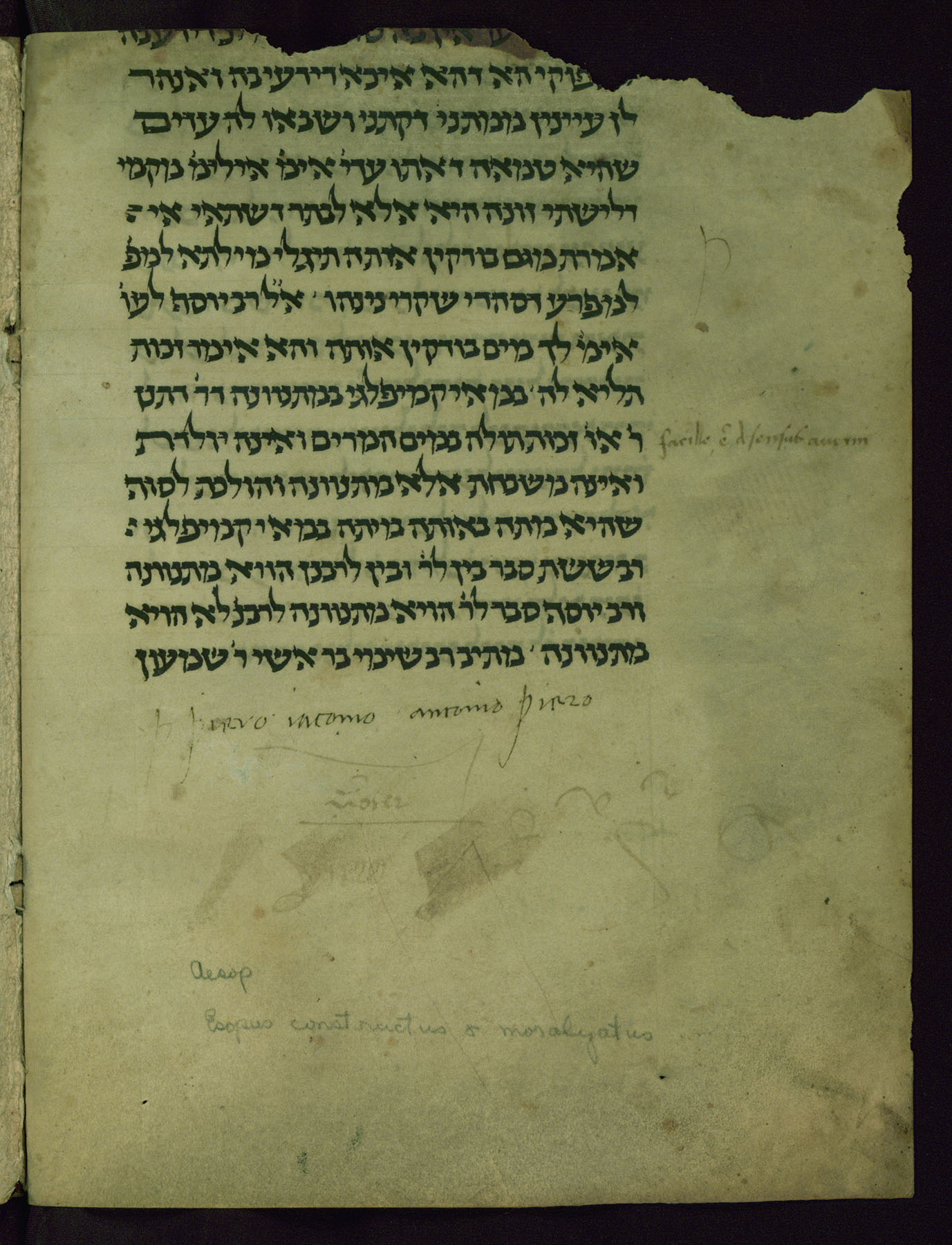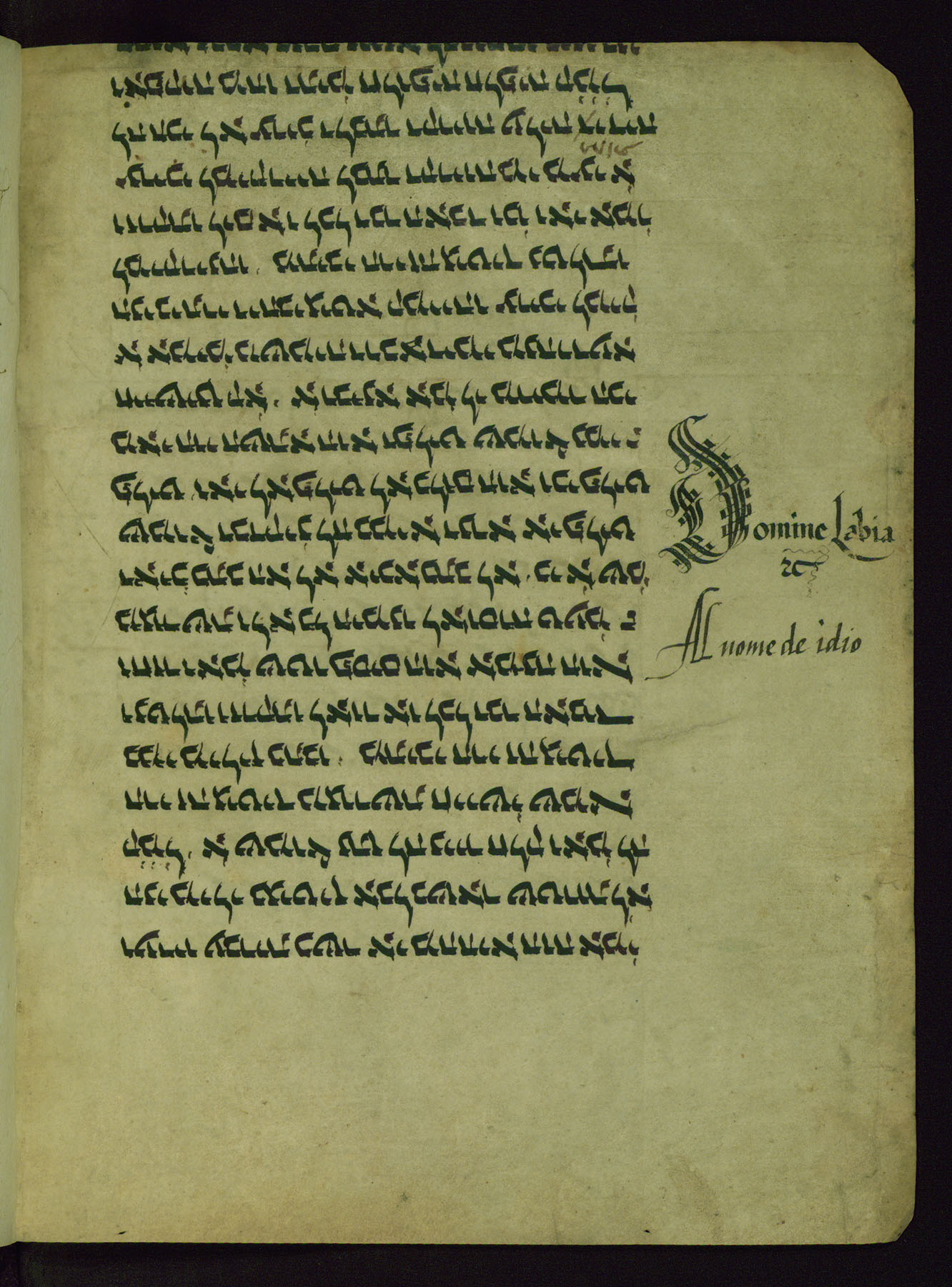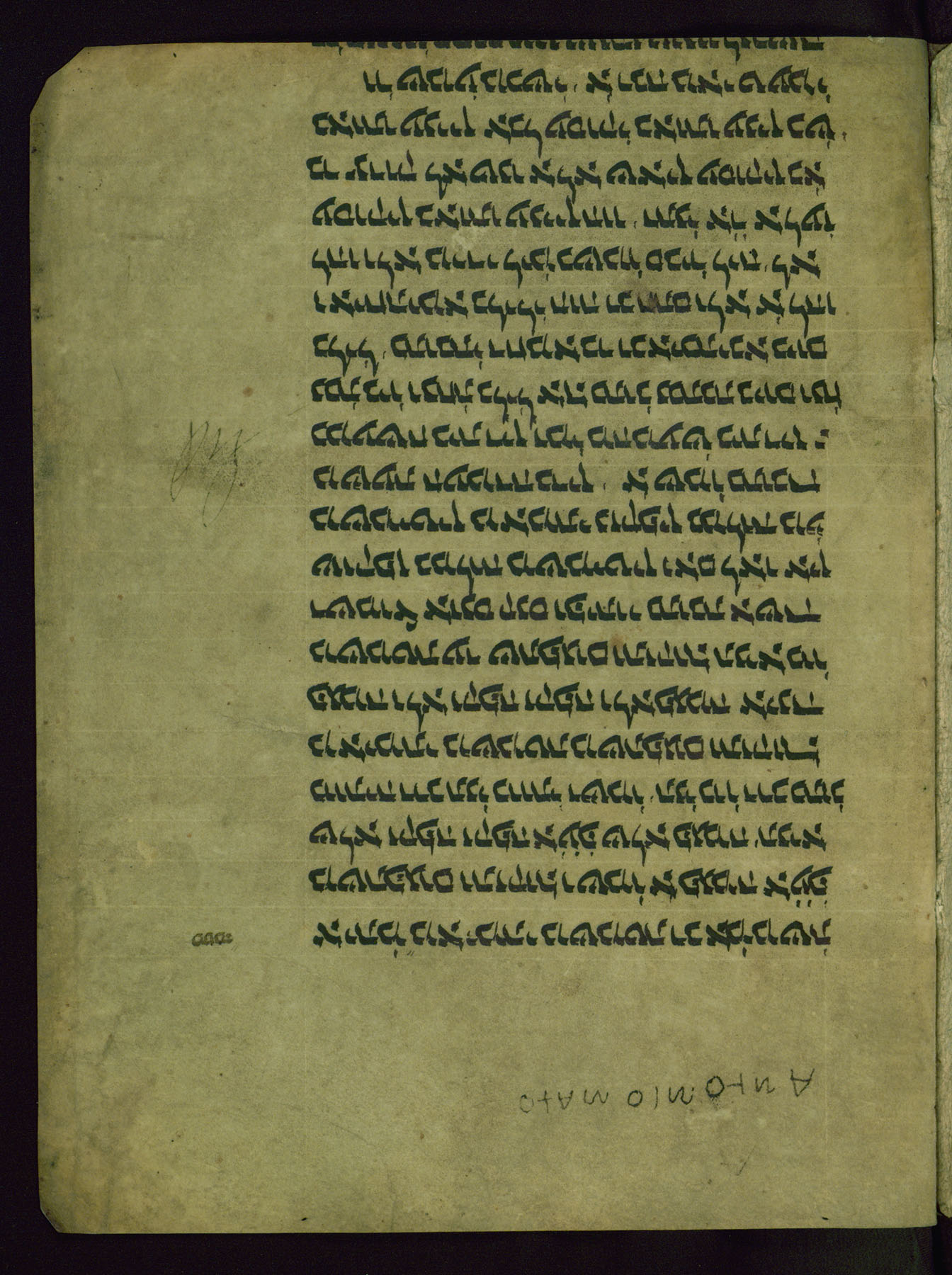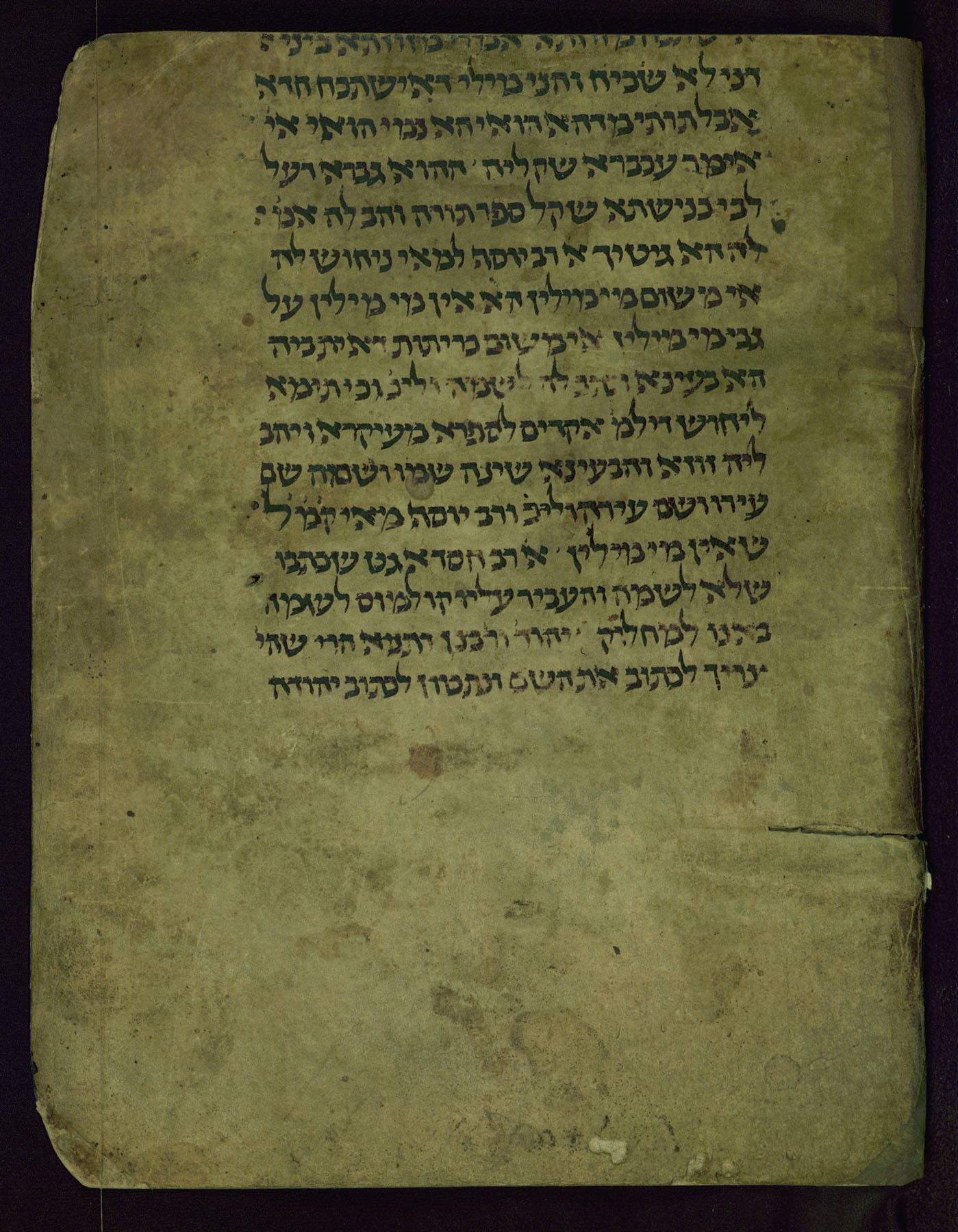Aesopus moralisatus
(Manuscripts and Rare Books)
This edition of Aesop’s Fables was created soon after the invention of the printing press around 1455 and would have been very expensive. The delicate paper pages were sold without a binding. In this example, a 12th-century parchment page from a large Talmud, a legal text that explains how the commandments in the Torah are to be carried out, was reused to create a sturdy binding and flyleaves to protect the new book. It is likely that the binder could not read the Aramaic text and simply regarded the page as a strong and decorative material. Today this is recognized to be a rare early fragment of a Talmud, making the binding more precious than the book it encases.
Provenance
Provenance (from the French provenir, 'to come from/forth') is the chronology of the ownership, custody, or location of a historical object. Learn more about provenance at the Walters.
Acquired by Henry Walters, Baltimore; by bequest to Walters Art Museum, 1931.
Exhibitions
| 2016 | Waste Not: The Art of Medieval Recycling. |
Conservation
| Date | Description | Narrative |
|---|---|---|
| Examination | examined for digitization | |
| Treatment | binding stabilized; re-housed; tears repaired | |
| 6/10/2016 | Treatment | binding stabilized; examined for exhibition |
Geographies
Brescia (Place of Origin)
Measurements
Page H: 8 × W: 6 3/16 in. (20.3 × 15.7 cm)
Credit Line
Acquired by Henry Walters between 1895 and 1931
Location in Museum
Not on view
Accession Number
In libraries, galleries, museums, and archives, an accession number is a unique identifier assigned to each object in the collection.
In libraries, galleries, museums, and archives, an accession number is a unique identifier assigned to each object in the collection.
91.12


















